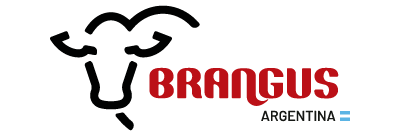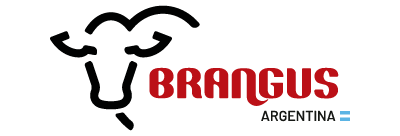BRANGUS TODAY
The expansion of the cattle frontier
The expansion of agricultural lands in the past 30 years has pushed cattle raising to poorer soils. It thus posed new challenges to the breeder, who must stretch his imagination to devise new management methods. Against this background, Brangus stands out as a crucial tool to turn these marginal lands more productive: stocking rates can be increased with larger beef yields per unit of land.
In the past decades we were faced with the challenge of raising cattle in the Argentine subtropical zone. Such expansion brought about a significant process of genetic absorption with Brangus, which improved existent cattle herds. Quality in breeding herds became increasingly homogenous, rebreeding and weaning percentages improved thanks to rational management including subtropical pastures, which brought dramatic changes in the very notion of stocking rates.
Breakthroughs in sanitary expertise were evident in endo – and ecto – parasites control. Genetics was coupled by technological changes, but such changes needed Brangus as a starting towards productive genotypes and the necessary proportion of Zebú to maintain toughness in an ever challenging environment Brangus breed has witnessed the most spectacular growth in Argentina as from 1980. It currently comes third in beef breeds over the nation. The largest development occurred in the north and north-east of the country. The past five years have witnessed a 50% increase in registered and purebred operations. Future expansion will probably happen in the north-west and west of the country: dry, hilly areas that demand Brangus positive traits and toughness.
It is also the breed with the most promising future within America. That is because its member countries need to bring early maturity and beef quality into their herds, albeit without giving up roughness.
Exports of breeding stock, semen and embryos to Uruguay, Bolivia, Brazil, Paraguay and Colombia have increased significantly. Argentine breeders have responded with high quality genetics, adapted to the climate conditions in the South American tropical zones.
The Argentine Brangus Association
The Argentine Brangus Association was founded in 1978 and has over 600 members and 200 active breeders in 13 provinces. Their work complies with Association rules. Registered animals number 475,000, with an annual average of 17,600 new registries between 1979 and 2006.
Mission statement of the Argentine Brangus Association
Provide leadership, services and technology to the Brangus breed. Enhance the influence of its genetics and expand its share in the cattle market in Mercosur and in the rest of the world.
Objectives of the Argentine Brangus Association
• Strengthen and expand Brangus frontiers inside and outside our country.
• Continue adding registered breeding sock in order to expand the genetic base of the breed.
• Increase significantly the number of registered animals in order to attain highly reliable EPDs for economically relevant traits.
• Offer our genetics to the world at large from cattle adapted to open forage, extensive production systems.
• Promote and highlight the “Brangus Brand” as synonymous with quality and homogenous products.
• Establish programs that will bring added value to commercial producers who benefit from Brangus genetics.
• Support measures of sanitary control in herds producing beef in natural, healthy environments for domestic and export markets.
• Increase the share of Brangus beef within the Hilton Quota, and in other projects aimed at exporting quality beef.
The Brangus Biotype
While other breeds restrain their development to certain geographic areas in view of adaptation issues. Brangus offers an efficient performance in practically every zone.
This is due to its exceptional malleability, which has contributed to produce an animal that can adapt to each region. This covers the Patagonian plateau, the humid pampas and subtropical areas, where higher percentages of Zebú are a must.
Brangus breeding stock are typically middle size, according to the ecological environment.

